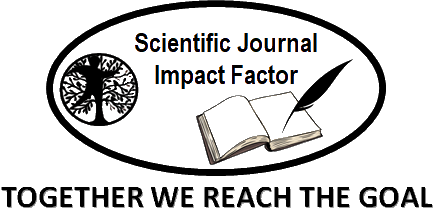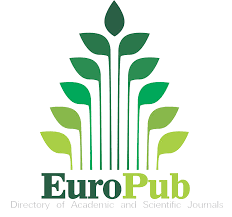Variability of inflammatory markers in chronic noncommunicable diseases in patients treated in the Internal Medicine Department of SULAB Hospital.
DOI:
https://doi.org/10.70577/asce.v4i4.458Keywords:
Inflammatory biomarkers; Diabetes; Ecuador; Chronic diseases; Hospital epidemiology; Clinical prognosis; Variability.Abstract
Chronic noncommunicable diseases (CNCDs) are associated with low-grade systemic inflammation, and monitoring using biomarkers can provide complementary information to stratify risk and guide clinical decisions. Within this framework, the objective was to evaluate the variability of C-reactive protein (CRP), interleukin-6 (IL-6), and tumor necrosis factor alpha (TNF-α) and to estimate their diagnostic and prognostic utility in patients with CNN. The study was conducted using an observational and analytical approach, cross-sectional and retrospective, in the Internal Medicine Department of the SULAB Day Hospital from January to December 2024. Secondary sources such as medical records and laboratory logs were used; Data quality criteria were ensured, and statistical analysis was performed using association tests (χ², Cramer's V), establishing significance at p<0.05. Clear and statistically significant differences were found between the biomarkers and the main pathologies evaluated, with IL-6 standing out for its greater discriminatory capacity, while CRP and TNF-α showed associations of intermediate magnitude; the highest values tended to be concentrated in patients with chronic renal failure, compared to other NCDs. Overall, the findings supported that the complementary measurement of IL-6, CRP, and TNF-α improves the detection of systemic inflammation, contributes to longitudinal follow-up, and strengthens the support for decisions that guide personalized care for patients with NCDs, especially in scenarios of clinical heterogeneity where traditional parameters are insufficient to anticipate evolution or therapeutic response.
Downloads
References
Aranco, N. (2019). Panorama de Envejecimiento y Atención a La Dependencia: Estado de Salud de América Latina y El Caribe. Inter American Development Bank. https://dx.doi.org/10.18235/0000984 DOI: https://doi.org/10.18235/0000984
Bai, J., Cui, J., Shi, F., & Yu, C. (2023). Global Epidemiological Patterns in the Burden of Main Non-Communicable Diseases, 1990-2019: Relationships With Socio-Demographic Index. International Journal of Public Health, 68, 1605502. https://doi.org/10.3389/ijph.2023.1605502 DOI: https://doi.org/10.3389/ijph.2023.1605502
Instituto Nacional de Estadística y Censos. (2023). Estadística de Defunciones Generales 2022. https://anda.inec.gob.ec/anda/index.php/catalog/988/overview
Jarrin, S. (2024). Relación de PCR, marcador inflamatorio, con Síndrome Metabólico en el adulto mayor Encuesta SABE 2009. [Trabajo de titulación, Universidad Central del Ecuador]. Repositorio Digital de la Universidad Central del Ecuador. https://www.dspace.uce.edu.ec/server/api/core/bitstreams/eec36bee-3c1e-4fd7-812f-a774feadc430/content
Kadatane, S. P., Satariano, M., Massey, M., Mongan, K., & Raina, R. (2023). The Role of Inflammation in CKD. Cells, 12(12). https://doi.org/10.3390/cells12121581 DOI: https://doi.org/10.3390/cells12121581
Lema Balla, J. C., Guevara Álvarez, A. K., Guevara Álvarez, R. A., Yánez Chicaiza, K. J., & Lema Balla, J. R. (2025). A systematic analysis based on the Global Burden of Disease Study 2024: Incidence, prevalence and years lived by patients with Chronic Kidney Failure globally, in Latin America and Ecuador. Salud, Ciencia y Tecnología, 5, 1434. https://doi.org/10.56294/saludcyt20251434 DOI: https://doi.org/10.56294/saludcyt20251434
Macías-Moreira, M. G., Ortega-Baldeon, G. A., & Azúa-Menéndez, M. del J. (2023). Enfermedades crónicas no transmisibles y la calidad de vida en el Ecuador. MQRInvestigar, 7(1), 1592-1612. https://doi.org/10.56048/MQR20225.7.1.2023.1592-1612 DOI: https://doi.org/10.56048/MQR20225.7.1.2023.1592-1612
Martinez, E., & Fiallos, J. (2022). Proteína C reactiva como biomarcador de procesos inflamatorios. [Trabajo de titulación, Universidad Nacional de Chimborazo]. Repositorio Digital de la Universidad Nacional de Chimborazo. http://dspace.unach.edu.ec/handle/51000/9496
Ministerio de Salud Pública. (2018). Vigilancia de enfermedades no transmisibles y factores de riesgo. https://www.salud.gob.ec/wp-content/uploads/2020/10/INFORME-STEPS.pdf
Ministerio de Salud Pública del Ecuador. (2022). Plan Nacional de Prevención y Control de Enfermedades Crónicas 2021–2025.
Organización Mundial de la Salud. (2021). Noncommunicable diseases. https://www.who.int/news-room/fact-sheets/detail/noncommunicable-diseases
Organización Panamericana de la Salud. (2023). Enfermedades no transmisibles. https://www.paho.org/es/temas/enfermedades-no-transmisibles
Puig-García, M., Caicedo-Montaño, C., Márquez-Figueroa, M., Chilet-Rosell, E., Montalvo-Villacis, G., Benazizi-Dahbi, I., Peralta, A., Torres-Castillo, A. L., & Parker, L. A. (2023). Prevalence and gender disparities of type 2 diabetes mellitus and obesity in Esmeraldas, Ecuador: A population-based survey in a hard-to-reach setting. International Journal for Equity in Health, 22(1), 124. https://doi.org/10.1186/s12939-023-01939-x DOI: https://doi.org/10.1186/s12939-023-01939-x
Siew, E. D., & Ikizler, T. A. (2020). Continuous prediction of future acute kidney injury: A step forward. Kidney International, 97(6), 1094-1096. https://doi.org/10.1016/j.kint.2020.02.013 DOI: https://doi.org/10.1016/j.kint.2020.02.013
Taheri Soodejani, M. (2024). Non-communicable diseases in the world over the past century: A secondary data analysis. Frontiers in Public Health, 12, 1436236. https://doi.org/10.3389/fpubh.2024.1436236 DOI: https://doi.org/10.3389/fpubh.2024.1436236
Valencia, G. (2023). Marcadores inflamatorios y su correlación con alteración de la función renal, estancia hospitalaria y mortalidad en pacientes con infección severa por COVID-19 atendidos en un hospital centinela de Quito-Ecuador durante 2020-2021. [Trabajo de titulación, Universidad Central del Ecuador]. Repositorio Digital de la Universidad Central del Ecuador.https://www.dspace.uce.edu.ec/entities/publication/5d6cf2e8-074b-42ae-8924-cd1183181232
Downloads
Published
How to Cite
Issue
Section
License
Copyright (c) 2025 Lic. Francisco Javier Alvarado Morillo, Dr. Héctor Quintero Montaño

This work is licensed under a Creative Commons Attribution-NonCommercial-ShareAlike 4.0 International License.
Eres libre de:
- Compartir : copiar y redistribuir el material en cualquier medio o formato
- Adaptar : remezclar, transformar y desarrollar el material
- El licenciante no puede revocar estas libertades siempre y cuando usted cumpla con los términos de la licencia.
En los siguientes términos:
- Atribución : Debe otorgar el crédito correspondiente , proporcionar un enlace a la licencia e indicar si se realizaron cambios . Puede hacerlo de cualquier manera razonable, pero no de ninguna manera que sugiera que el licenciante lo respalda a usted o a su uso.
- No comercial : no puede utilizar el material con fines comerciales .
- CompartirIgual — Si remezcla, transforma o construye sobre el material, debe distribuir sus contribuciones bajo la misma licencia que el original.
- Sin restricciones adicionales : no puede aplicar términos legales ni medidas tecnológicas que restrinjan legalmente a otros hacer algo que la licencia permite.





































